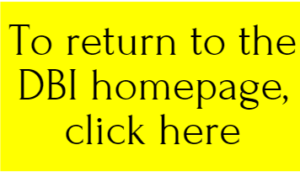Lesson Intensification
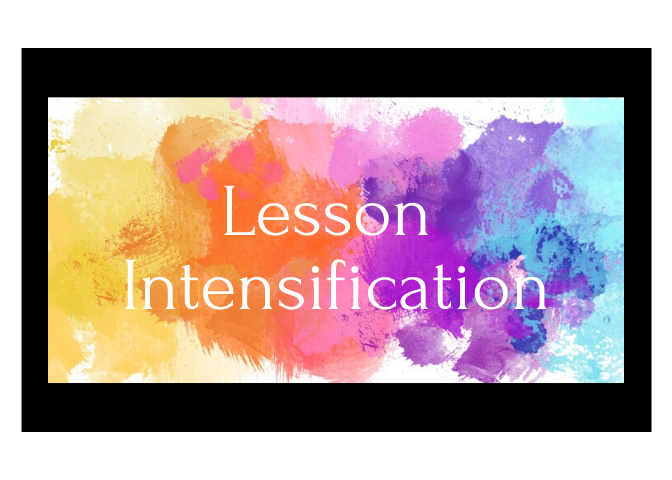
Lesson Intensification involves taking an original lesson plan and intensifying it by including the Elements of Explicit Instruction. The process involves selecting areas of a lesson that can be changed using either increased opportunities to respond, modeling (I do, you do, we do), immediate and corrective feedback and other lesson presentation adjustment. We will look at each of the areas for intensification individually.
For more information on The Elements of Explicit Instruction, click here.
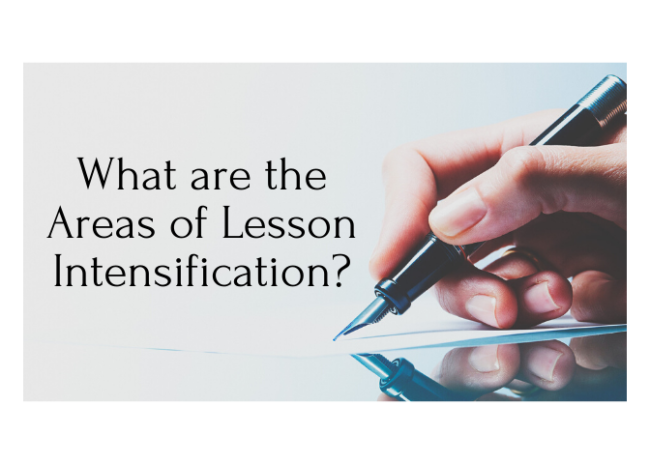
We will be looking at the National Institute for Intensive Interventions “Intensive Intervention Practice Categories Checklist.” This checklist can be found in their module “What Do I Do Now? Individualizing Academic Interventions when Standards Approaches Don’t Work.”
To access the Intensive Intervention Practice Categories Checklist, click here
Let’s take a look at the checklist, and each of the categories.
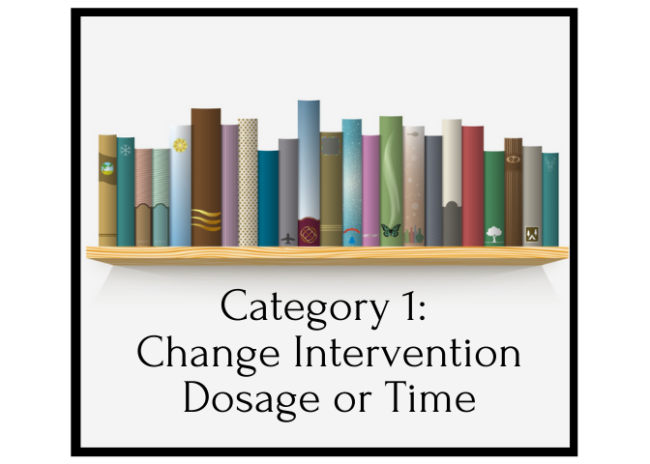
This intervention category looks at changing the time and amount of minutes of intensive instruction a student receives. This is the simplest adjustment to make to instruction and has the potential to have a more immediate impact on student outcomes. These are the categories that can be adjusted.

Here are some suggested approaches from NCII:
- Increase daily intervention time.
- Increase duration/number of sessions
- Increase frequency of sessions
- Provide extended instruction
Example:
Mrs. Higgins has begun making adjustment to her student Susan’s intensive instruction. Susan is currently receiving 3 session of intensive math instruction three days a week for 30 minutes. She decides that the first adjustment she would like to make to Susan’s instruction is the dosage and time she receives instruction weekly. She increases Susan’s instructional minutes to 45 minutes and increase her sessions to four times a week.
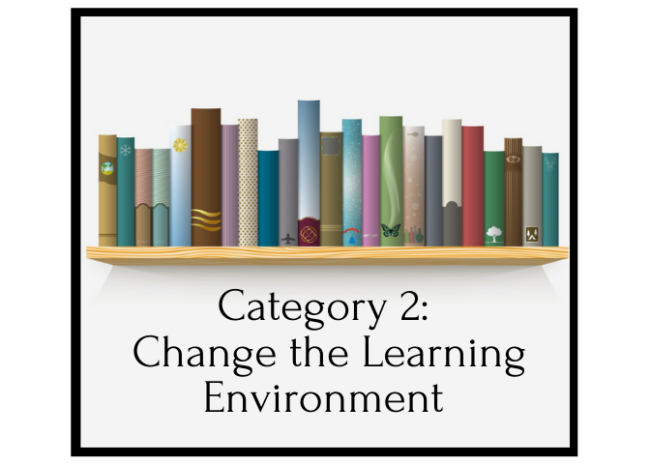
This intervention category looks at changing the learning environment to increase attention and engagement. This adjustment could be reducing the instructional group size, creating groups where students are on the same academic level and changing the instructional setting. These are the categories that can be adjusted.

Reducing the group size has the potential to minimize distractions and increase student to teacher interactions. Vaughn et al. (2012) suggest for elementary students group no larger than four and for middle school and secondary students a suggestion of 10-15 per group.

Homogeneous groups refers to putting students on the same academic level in the same groups. This allows you to target and deliver instruction that will impact all the students since their skill levels are the same. Homogeneous groups also can impact teacher to student interactions and increase on-task engagement since students are on the same skill level and instruction is targeted to their skills.

Changing the learning environment refers to changing the setting or the arrangement of instruction. Making considerations to where instruction is happening, increasing time on task and minimizing distraction could have a positive impact on student outcomes.
Example:
Mr. Stein, a 3rd grade teacher, has followed the DBI process and is ready to implement his instructional adaptations. His student Corey is currently in a math group with varying skill levels and there are seven students in the group. They are currently working in Mr. Steins’s resource classroom. Mr. Stein’s resource room is a highly structured environment so he decides that no adaptations are needed for the learning environment. He decides that there is a need for a change in group size and student placement in groups. He decides, using progress monitoring data, to change the student groups so that students with the same skill level are in the same group for instruction. This also reduces the group size so that Corey is now in an instructional group with two other students.
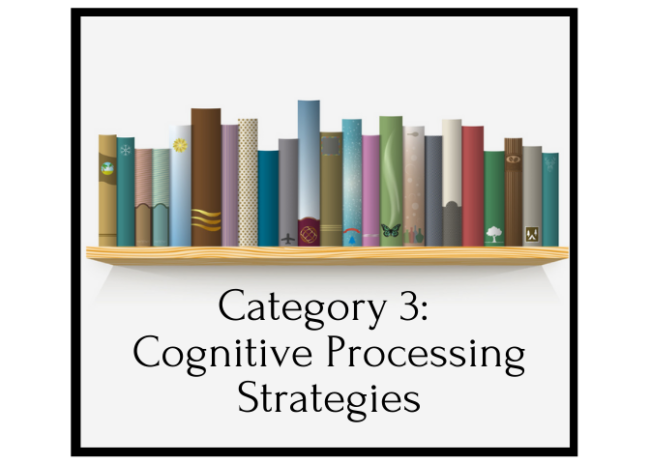
This category looks at teaching students cognitive processing skills that could impact their learning. Cognitive processing strategies refer to mental strategies that students use during thinking and learning. The categories for strategies in this checklist are: memory, attribution, attention and self-regulation and self-monitoring. Let’s look at each of these in detail.

Memory looks at teaching students skills ways to remember and recall information, skills and strategies they have learned.
Here are some suggested approaches from NCII:
- Teach note-taking skills
- Review prior knowledge
- Speak and write/draw project information
- Repeat important instructions, key words, etc.
- Model procedures
- Teach students to visualize information
- Teach routines
- Use verbal or visual cues
- Model-out loud
- Develop mnemonic devices
- Check for understanding frequently
- Teach student to self-check for understanding

Self-regulation and self-monitoring refer to a student being able to monitor their own learning and understanding. Some students may need additional instruction or strategies to help them self-regulate and self-monitor.
Here are some suggested approaches from NCII:
- Model thinking aloud for new concepts
- Include students in goal setting and monitoring their progress
- Explicitly teach and model use of strategies and routines
- Offer specific feedback that highlights behaviors leading to achievement
- Ask students to read the text aloud and think about what the author is saying
- When solving word problems, teach students to ask themselves whether they understand the question
- Teach students to ask, “does my answer make sense?”
- Teach students to be “break down” their understanding
- Keep track of how long it takes a student to master a skill
- Teacher students to ask for help
- Teach student to set goals
- Teach students to graph and monitor their progress
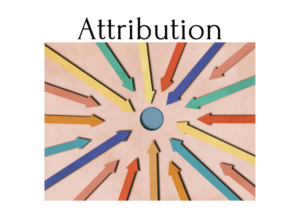
Attribution refers to a person’t belief about the cause of academic failure. Student who struggle with academics may have the mindset their failure in an internal problem and cannot be changed. Some students also have external understanding of their success. Here are two examples:
Internal – “I failed this math test because I’m stupid.
External – “I did really well on this test because the teacher made the questions easy.
Teaching attribution involves helping student work through negative self-talk and reinforcing their progress with success.
Here are some suggested approaches from NCII:
- Help students develop strategies or scripts when they engage in negative self-talk
- Include statements in goal setting and monitoring to help them connect their hard work with academic success
- Celebrate progress and provide explicit feedback that connects with their behaviors, skills or strategies
Example:
Miss Stephens wants to include some cognitive strategies as part of the DBI process for her student Frank. Frank struggles with his working memory and self-regulation of his learning. Miss Stephens looks at the potential strategies from the NCII checklist. She wants to work on note taking skills and monitoring progress for Frank. She decides to start with note taking for math. Frank often struggles to remember the steps needed to solve multi-step calculations. She wants to focus on Frank taking notes to give him a visual reminder while he works on math calculation problems. She wants to incorporate the notes along with the self-monitoring strategy of goal setting and self-monitoring. She creates Frank a note taking template where he can record the steps to solve multi-step calculations. She also work with Frank to set a goal of problems correct on his weekly progress monitoring for calculations. She combines this with working with Frank on his negative self-talk. When Frank is frustrated, he talks about himself as being stupid. Miss Stephens works with Frank to create a script that he can use to work through his negative self-talk.

This is the last category on the Intensification Checklist. This section of the checklist looks at modifying instruction based on explicit and systematic instruction. Creating more opportunities for students to respond, providing frequent feedback, using clear and concise language and prioritizing content help to increase the likelihood that a student can have positive academic outcomes. Let’s look at each of these in detail.

Content refers to identifying and prioritize the content you want students to learn. Focusing on content that will not help students learn and generalize new skills and strategies is not a good use of content focus.
Here are some suggested approaches from NCII:
- Prioritize and engage students in what you want them to know
- Ensure instructional content aligns with students demonstrated needs
- Use precise, frequent progress monitoring to determine if learning is occurring
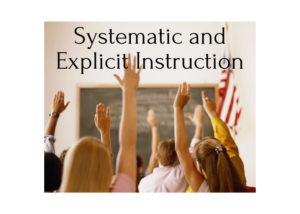
Systematic and explicit instruction refers to using instructional techniques that provide students with multiple opportunities to respond and practice a new skill, providing extensive modeling (I do, you do, we do) and other techniques that increase the likelihood that a student will learn and new strategy or skill.
Here are the suggested approaches from the NCII:
- Sequence learning in chunks from easier to difficult
- Breaks steps into small, manageable chunks
- Provide temporary supports for the level of difficulty
- Tell students what you want them to know and learn
- Provide a graphic organizer
- Access background knowledge
- Model (I do)
- Provide extensive guided practice (We do)
- Provide independent practice (You do)
- Check for maintenance of skills
- Provide concrete learning opportunities with manipulatives or visuals
- Scaffold instruction
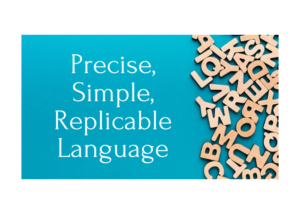
Using precise, simple and replicable language refers to using the same, content specific language throughout lessons. When students are being exposed to the same terms and language in the context of learning a new skill, they are more likely to be able to understand what is being asked of them.
Here are some of the suggest approaches from NCII:
- Plan precise, specific language for parts of you lesson that involve explanation of important ideas
- Use correct vocabulary
- Use the same language every time
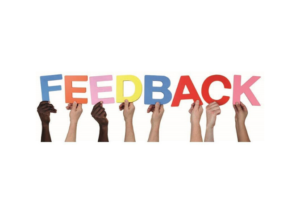
Feedback and correction refers to providing students with positive feedback on their behavior and learning as well as providing immediate correction when needed. A student is more likely to apply a new strategy the correct way when frequent feedback is being applied during the learning process. Giving positive feedback let’s students know that they are applying a new skill or strategy correctly, thus increasing the likelihood that they will continue to do the new skill correctly.
Here are the suggested approaches from NCII:
- Tie your feedback directly to a student’s actions
- If a student makes an error, explain why it is incorrect, model the correct response, and have the student provide a corrected response before moving on
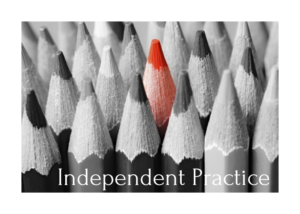
Providing students with independent practice allows them to demonstrate mastery of a skill, after it has been explicitly taught and practices with guided support. Independent practice should not take the place of systematic and explicit instruction. If students are working on independent practice, like homework, the practice should involve skills and strategies that have been taught and not those that need to be learned. While students are working on independent work, frequent positive and corrective feedback should still be happening.
Here are some suggested approaches from NCII:
- Incorporate independent practice after students begin to demonstrate mastery of new skills and content
- All reading material should be at the student’s independent reading level to avoid frustration and errors
- Incorporate daily practice routines at the beginning and end of the intervention period
- Give homework to facilitate practice
- Reinforce on-task behavior
Example:
Mr. Finch is implementing the DBI process during his 1st grade reading intervention with his students Ray and Lizzie. The students are working on decoding CVC words and then reading them in short phrases and sentences. Mr. Finch wants looks at modifying the instruction during his intervention to provide the students more opportunities to respond and more opportunities for feedback. He want to focus on using concise language and modeling along with independent practice. He starts his lesson with telling students that they will be working with CVC words and by the end of the lesson they will be able to decode a word and read a CVC word. He focuses on words with the short vowel A in this lesson. He models for the students how the short vowel sound for A and has the students respond and model the short sound for A. He repeats this process for the consonants in the alphabet but leaves out the other vowels since A is the focus. He refers to the letters and the sounds as vowels an consonants and uses the same language during modeling and guided practice. At the end of the lesson, Ray and Lizzie each are able to decode and read a word with short A.

Lesson intensification refers to applying instructional changes around dosage, the learning environment, cognitive strategies and instructional approaches. The National Institute for Intensive Intervention has provided a checklist with suggested lesson intensification approaches. You can access a copy of the list here.
To access the Intensive Intervention Practice Categories Checklist, click here
References:
Fuchs, L. S., Fuchs, D., & Malone A. S. (2017). The taxonomy of intervention intensity. Teaching Exceptional Children, 50(1), 35–43.
Lemons, C. J., Kearns, D. M., & Davidson, K. A. (2014). Data-based individualization in reading: Intensifying intervention for students with significant reading disabilities. Teaching Exceptional Children, 46(4), 20–29.
Vaughn, S., Wanzek, J., Murray, C. S., Roberts, G. (2012). Intensive interventions for students struggling in reading and mathematics: A practice guide. Portsmouth, NH: RMC Research Corporation, Center on Instruction.
What Do I Do Now? Individualizing Academic Interventions when Standard Approaches Don’t Work (DBI Professional Learning Series Module 7). (n.d.). Retrieved October 28, 2019, from https://intensiveintervention.org/resource/what-do-i-do-now-individualizing-academic-interventions-when-standard-approaches-dont-work.
